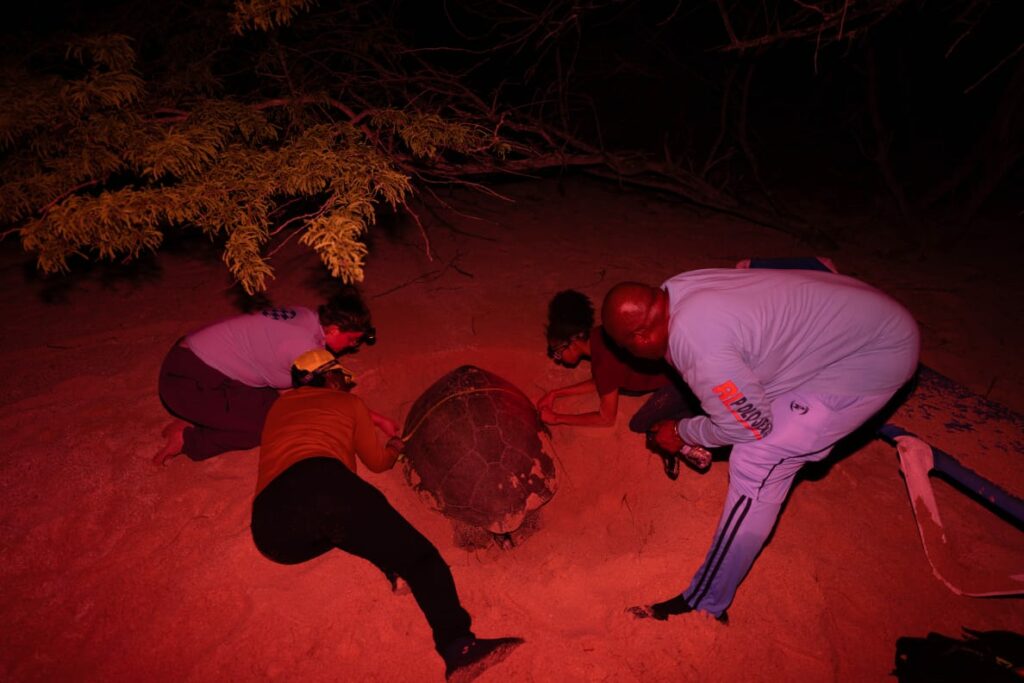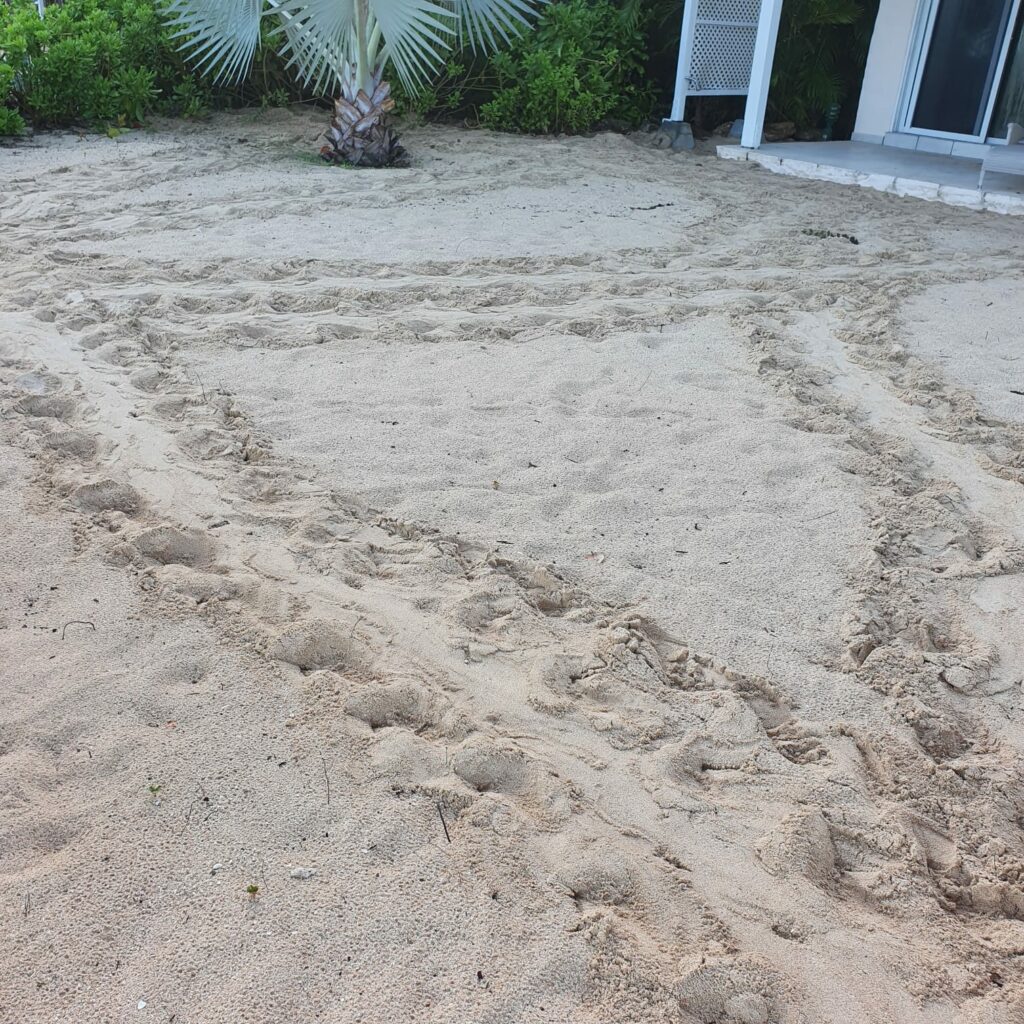On a particularly sweltering night in September, a group of people huddled around a bush on the outskirts of Galley Bay Resort. Hushed whispers lingered in place of the absent sea breeze, and a single red light cast eerie shadows in the sand.
Though the threat of storms in September often discourages tourists from travelling to the Caribbean, a different kind of visitor likes to frequent the beaches of Antigua and Barbuda during this time. The gathering of EAG staff, volunteers, tourists, and hotel staff silently inched closer as the meter-long female hawksbill sea turtle deposited her first egg in the sand.
The EAG has been involved in sea turtle monitoring since 2009, under the Antigua Sea Turtle Project. In 2021, the sea turtle project was rebranded as the Antigua Marine Conservation Programme (AMCP), with new goals to take an ecosystem-based approach to wildlife and biodiversity conservation in marine environments.

Many of these ecosystems and their inhabitants face extinction due to threats caused by human activities, such as plastic debris, overfishing, chemical pollutants, and climate change.
Given Antigua and Barbuda’s connection to the ocean and the importance of healthy marine habitats for industries like fishing and tourism, we have renewed our commitment to researching and protecting marine biodiversity under the AMCP.
In the AMCP’s first full year, our mission was to solidify our sea turtle nesting beach monitoring. In order to best conserve the three species of sea turtles that nest in Antigua (hawksbill sea turtle, green sea turtle, and leatherback sea turtle), we need to understand their current abundance, locations, reproductive success, and the main threats they face as they make landfall.
To ensure consistent coverage of 10 popular nesting beaches, the AMCP trained over 70 sea turtle patrol volunteers. These fantastic community members participated in classroom and field training sessions to learn the ins and outs of scientific methodology, such as how to identify a sea turtle track, tag a nesting female, evaluate hatching success, and many other techniques to evaluate sea turtle activity.
Tagging our nesting turtles with small metal flipper tags is the best way for us to understand how the populations are doing. When turtles can be uniquely identified, we can observe how many nests they lay each year, how often they return to Antiguan beaches, and evaluate how successful they are in contributing to the population.
Starting in July 2022, we were able to tag 11 hawksbill sea turtles and observe one previously tagged green sea turtle. These turtles deposited an estimated 43 nests between July and November.
Having this baseline data will allow us to observe the inter-annual trends for this nesting population: are the number of turtles increasing, decreasing, or relatively stable?
Globally, hawksbill sea turtle populations have been reduced by nearly 90 percent in the last century. This trend is reflected in decreasing nesting numbers at certain key sites in the Caribbean, including Antigua’s own Long Island. By closely monitoring this critically endangered species, Antigua is contributing to a regional and global dataset that will assist in making science-based management decisions.
Back on the beach, under the direction of EAG staff and collaborators, the group of sea turtle patrol volunteers deftly checked the hawksbill’s flipper tags and filled out a comprehensive data sheet. Her tag number identified her as WS11833, or “Patience” as our volunteers named her due to the required stoicism in watching her spend multiple hours on the beach finding the perfect spot for her nest.

With our data collected, and her eggs safely deposited, the onlookers all quietly stepped back to give her some room as she finished up her arduous task of covering and camouflaging her nest.
Two months later, over 100 hatchlings spilled out of the nest chamber and made their way down to the sea. We hope to see some of those females back in Antigua in 15-20 years to contribute to their population and provide a wondrous experience for budding marine scientists in Antigua and Barbuda.
If you would like to learn more about becoming a sea turtle patrol volunteer with the EAG, please contact us at [email protected].

